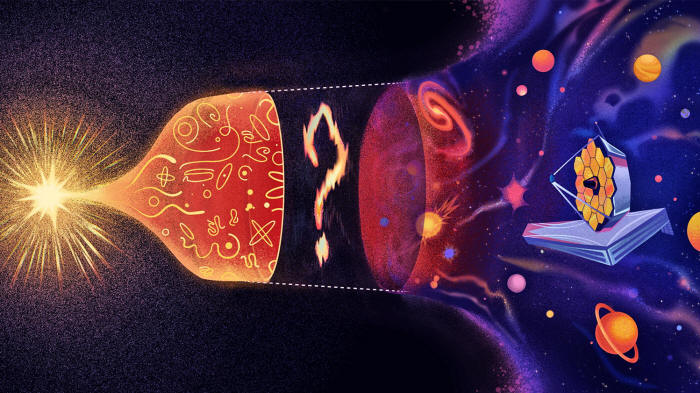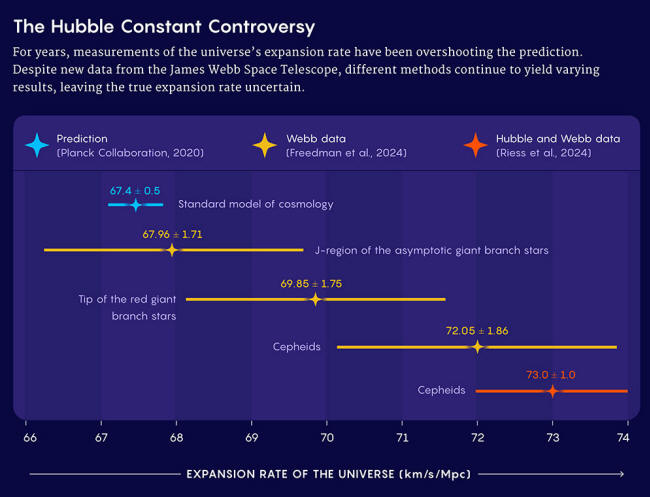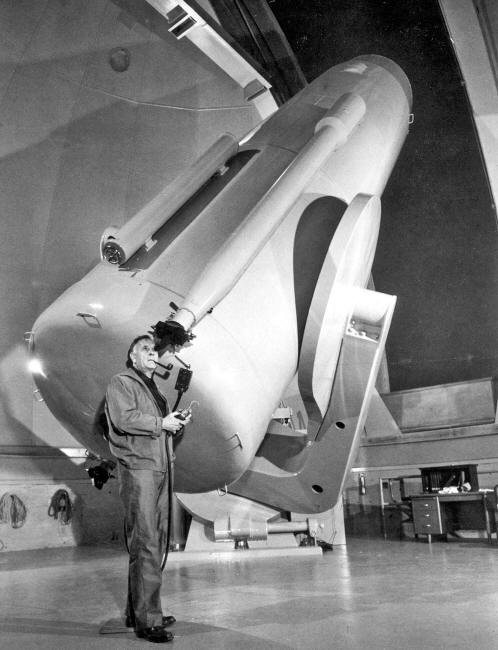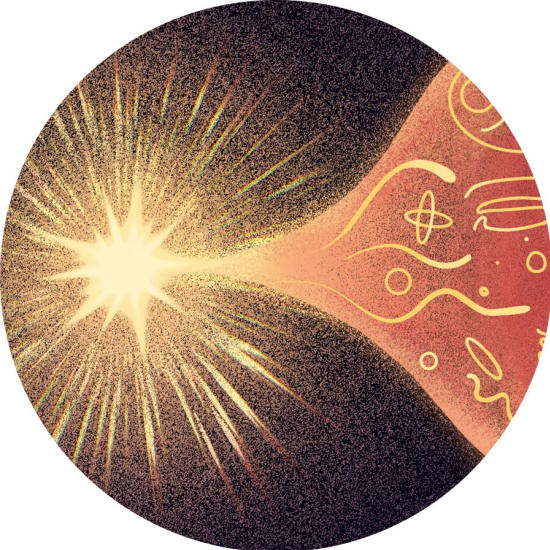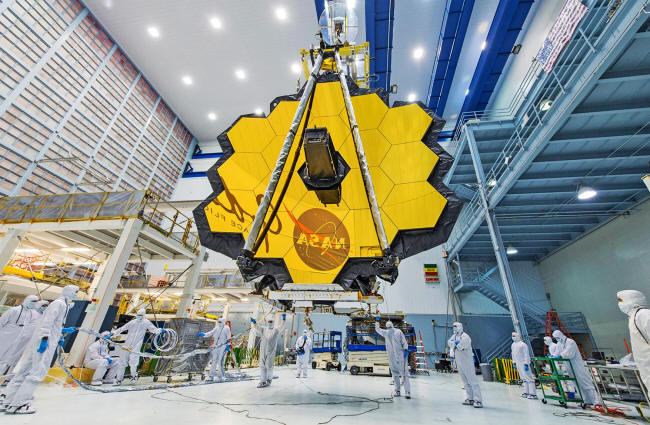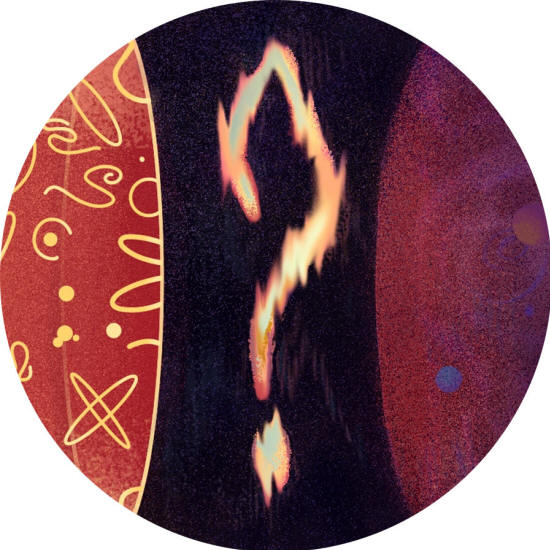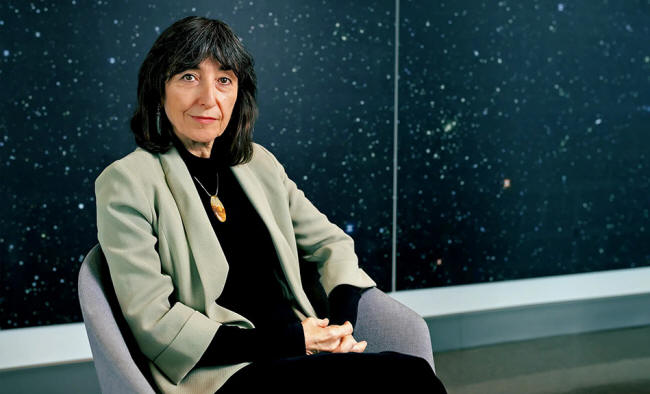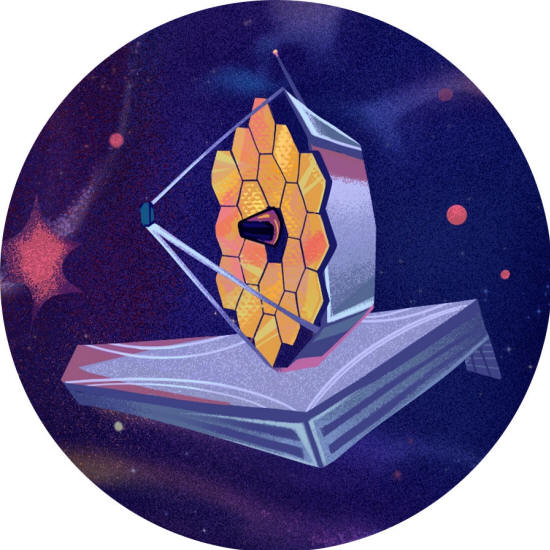|
using the James Webb Space Telescope have led some to question
if the Hubble
tension is real.
of the cosmic expansion rate suggests that when it comes to the Hubble tension, cosmologists are still missing something...
Modern measurements of how fast it is expanding disagree, however, suggesting that our understanding of the laws of physics might be off.
But a long-awaited analysis of the telescope's observations released late Monday evening once again gleans conflicting expansion rates from different types of data, while homing in on possible sources of error at the heart of the conflict.
Two rival teams have led the effort to measure the cosmic expansion rate, which is known as the Hubble constant, or H0.
One of these teams, led by Adam Riess of Johns Hopkins University, has consistently measured H0 to be about 8% higher than the theoretical prediction for how fast space should be expanding, based on the cosmos's known ingredients and governing equations.
This discrepancy, known as the Hubble tension, suggests that the theoretical model of the cosmos might be missing something - some extra ingredient or effect that speeds up cosmic expansion.
Such an ingredient could be a clue to a more complete understanding of the universe.
Riess and his team released their latest measurement of H0 based on Webb data this spring, getting a value that agrees with their earlier estimates.
But for years a rival team led by Wendy Freedman of the University of Chicago has urged caution, arguing that cleaner measurements were needed.
Her team's own measurements of H0 have invariably landed closer than Riess' to the theoretical prediction, implying that the Hubble tension may not be real.
Since the Webb telescope started taking data in 2022, the astrophysics community has awaited Freedman's multipronged analysis using the telescope's observations of three types of stars.
Now, the results are in:
Mark Belan for Quanta Magazine
That the three methods disagree,
Freedman's results have been submitted to The Astrophysical Journal but have not yet undergone formal peer review, where outside researchers anonymously check the data and analysis.
Saul Perlmutter, a Nobel Prize-winning cosmologist at the University of California, Berkeley, who was shown the team's preprint prior to its release, told Quanta that the results suggest,
Riess, after studying the preprint, told Quanta that he takes issue with the small set of supernovas that Freedman's team used in one step of the analysis, which he says could bias the results.
The results come after months of behind-the-scenes drama, as Freedman initially thought her analysis had killed the Hubble tension, only to see it come roaring back to life.
That's business as usual.
According to Perlmutter,
A Clashing Universe
The hard part of gauging cosmic expansion is measuring distances to objects in space.
The American astronomer Henrietta Leavitt first uncovered a way to do this in 1912 using pulsating stars called Cepheids. These stars flicker at a rate that relates to (and can therefore reveal) their intrinsic luminosity.
Once you know how luminous a Cepheid is, you can compare that to how bright or dim it appears to estimate how far away its galaxy is.
Edwin Hubble used Leavitt's method to measure the distances to a handful of galaxies with Cepheids in them, discovering in 1929 that galaxies farther from us are moving away faster.
Hubble pegged the expansion rate at 500 kilometers per second per megaparsec (km/s/Mpc), meaning that two galaxies separated by 1 Mpc, or about 3.2 million light-years, fly apart at 500 km/s.
That was wildly off...
The American astronomer Edwin Hubble, discoverer of cosmic expansion, is pictured in 1949 peering into the Schmidt telescope
at the Palomar
Observatory near San Diego.
Measurements of H0 improved as astronomers got better at calibrating the relationship between Cepheids' pulsation frequency and their luminosity.
Still, the whole approach was limited because Cepheids are only so bright. To measure the distance to galaxies across the vastness of the universe, scientists would need a new approach.
In the 1970s, researchers started using Cepheids to calibrate the distances to bright supernovas, enabling more accurate measurements of H0.
Then as now, two research teams led the way, using supernovas anchored to Cepheids and arriving at disagreeing values of 50 km/s/Mpc and 100 km/s/Mpc.
The 1990 launch of the Hubble Space Telescope gave astronomers a new, crisp view of the universe.
Freedman led a multiyear observing campaign using Hubble, and in 2001, she and her colleagues announced an expansion rate of 72 km/s/Mpc, estimating that this was at most 10% off.
Riess, who is one of the Nobel Prize-winning discoverers of dark energy, jumped into the cosmic expansion game a few years later.
Riess' team's measurement, even as its precision improved, stayed at 73. This higher value implies that galaxies today are flying apart faster than they should be according to theory.
The Hubble tension was born.
This missing something would be the first new ingredient of the cosmos to be discovered since dark energy.
Theorists have speculated about its identity:
Or maybe the something that's missing has more to do with us than the universe.
Ways of Seeing
Some cosmologists, including Freedman, have suspected that unrecognized errors are to blame for the discrepancy.
The most common argument in this vein is that Cepheid stars live in the disks of younger galaxies, in regions crowded with stars, dust and gas.
This congestion complicates brightness measurements.
When the house-size Webb telescope launched in December 2021, Riess and his colleagues turned to its powerful infrared camera to pierce the dust in the crowded regions where Cepheids live.
They sought to test if crowding has as strong an effect as Freedman and other researchers have claimed.
The 6.5-meter segmented mirror of the James Webb Space Telescope underwent tests at NASA's Goddard Space Flight Center in Greenbelt, Maryland, in 2017,
years before
its December 2021 launch.
When they compared their new numbers to the distances calculated from Hubble telescope data,
Their latest results with Webb reaffirm the H0 value that they measured with Hubble a few years ago:
Given the crowding concern, though, Freedman had already turned to alternative stars that could serve as distance indicators.
These are found in the outskirts of galaxies, far from the madding crowd.
One type is "tip-of-the-red-giant-branch," or TRGB, stars.
As it ages, a red giant will eventually ignite the helium in its core.
At that moment, both the star's temperature and its brightness suddenly drop off, said Kristen McQuinn, an astronomer at the Space Telescope Science Institute who led a Webb telescope project to calibrate distance measurements with TRGBs.
By comparing the observed brightness of these stellar populations, astronomers can estimate relative distances.
(With any method, the physicists must deduce the absolute distance of at least one "anchor" galaxy in order to calibrate the whole scale. For their anchor, Riess, Freedman and other groups use an unusual nearby galaxy whose absolute distance has been determined geometrically through a parallax-like effect.)
Using TRGBs as distance indicators is more complex than using Cepheids, however.
McQuinn and her colleagues used nine of the Webb telescope's wavelength filters to understand precisely how their brightness depends on their color.
Astronomers are also beginning to turn to a new distance indicator:
These stars also sit away from a galaxy's bright disk and emit a lot of infrared light.
The technology to observe them at great distances wasn't adequate until the Webb era, said Freedman's graduate student Abigail Lee.
Freedman and her team applied for Webb telescope time to observe TRGBs and JAGBs along with the more established distance indicators, the Cepheids, in 11 galaxies.
An Evaporating Solution
On March 13, 2024, Freedman, Lee and the rest of their team sat around a table in Chicago to reveal what they had been hiding from themselves.
Over the previous months, they had split into three groups.
Each was tasked with measuring the distance to the 11 galaxies in their study using one of three methods: The galaxies also hosted the relevant kinds of supernovas, so their distances could calibrate the distances of supernovas in many more galaxies farther away.
How fast these farther galaxies are receding from us (which is easily read off from their color) divided by their distances gives H0.
The three groups had calculated their distance measurements with a unique random offset added to the data. When they met in person, they removed each of the offsets and compared the results.
All three methods gave similar distances, within 3% uncertainty.
The team calculated three H0 values, one for each distance indicator.
At that moment, they appeared to have erased the Hubble tension.
But when they dug into the analysis to write up the results, they found problems.
The team noticed that there were large error bars on the TRGB measurement.
They tried to shrink them by including more TGRBs. But when they did so, they found that the distance to the galaxies was smaller than they first thought.
The change yielded a larger H0 value.
In the Cepheid analysis, Freedman's team uncovered an error: In about half the Cepheids, the correction for crowding had been applied twice.
Fixing that significantly increased the resulting H0 value.
The Hubble tension was resurrected...
Nancy Wong. Wendy Freedman at the University of Chicago is exploring how Webb telescope observations can be squared with
the standard
cosmological model.
But Freedman suspects that the Cepheid-based H0 measurement is not as trustworthy as the others.
It is extremely sensitive to assumptions about, for example, the elemental composition of the Cepheids, and each star's neighborhood.
For this, Freedman and her colleagues turned to archival Hubble telescope data, which captures the "dust depth," but it's not as high-resolution as Webb data.
That added uncertainties in the calculated distances, she said.
Another issue surfaced.
But according to Freedman, the galaxies' supernovas seemed to be intrinsically brighter than the ones in farther galaxies. Riess and his colleagues also are concerned that this sample may be misleading and biased.
In any case, it is another puzzle cosmologists have yet to understand, and it also affects the H0 value.
Their paper reports three separate H0 values.
The JAGB measurement - the one that was done in a completely blind way, without any subsequent correcting - gives 67.96 km/s/Mpc, give or take 1.71 km/s/Mpc.
That's smack-dab on top of the theoretical prediction, seeming to confirm the standard model of cosmology. TRGBs yield a value of 69.85 with similar error margins.
The result also alleviates the Hubble tension.
The Cepheid method put the value of H0 higher, at 72.05, but with more subjectivity involved:
The high end of the range matches Riess' measurements; at the low end, the Hubble tension all but goes away.
Combining the methods and uncertainties yielded an average H0 value of 69.96 with a 4% uncertainty.
That margin of error overlaps with both the theoretical prediction for the cosmic expansion rate and Riess' team's higher value.
Tensions and Resolutions
The James Webb Space Telescope is also enabling additional ways to measure H0.
For instance, astronomers are in the early phases of using how mottled a galaxy looks as a proxy for its distance.
The idea is simple:
A different method also offers some hope:
The University of Arizona astronomer Brenda Frye leads a program to observe seven clusters with the Webb telescope.
When Frye and her colleagues looked at their first telescope image last year, featuring the massive galaxy cluster G165,
The dots were three separate images of the same supernova that had exploded behind the cluster.
After repeatedly observing the image, they could calculate the differences between the arrival times of the three lensed supernova images.
The time delay is proportional to, and can be used to infer, the Hubble constant.
They measured an expansion rate of 75.4 km/s/Mpc, although with a large uncertainty of +8.1 or −5.5 km/s/Mpc.
Frye expects to refine those error bars after a few more years of similar measurements.
Both Riess' and Freedman's teams also anticipate that the next few years of JWST observations will enable them to home in on an answer with their traditional, star-based methods.
|


